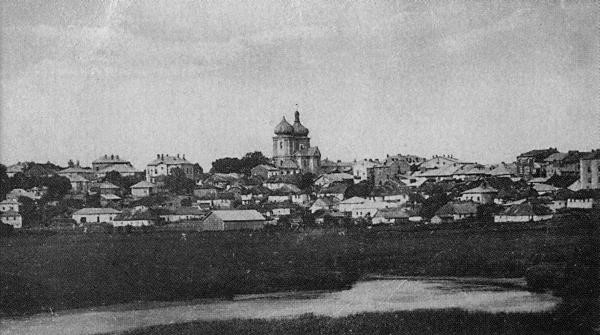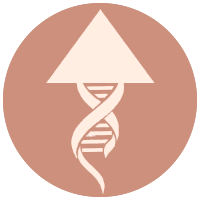I began looking into the Brumer family in 2013. My research was very interesting and yet also complicated by the fact that information on the earliest members of this family dates back to the beginning of the 20th century and the search area includes six countries, many of which can no longer be found on modern atlases. In addition, gaps in the biographies of relatives as well as my lack of knowledge of Hungarian and Polish severely limited my initial options.
The first thing I managed to find was the area where the carriers of this surname mainly lived between the 8th and 19th centuries: Habsburg Galicia. I had to go to the archives that stored information about the people who lived in this location. Two weeks later, my searches began to bear fruit: in the Central Archives of Historical Documents in Warsaw, as well as in the State Archives of the Ternopol Region and in the Central State Historical Archives of Ukraine in Lvov, there was sufficient information about the representatives of this family.
But let’s take things one step at a time. In order to better understand the conditions and historical circumstances that accompanied the lives of the Brumers, I need to talk about the history of the cities where the earliest information about the family has been preserved. As far as I could find, representatives of this family have lived in the city of Zbarazh for over 100 years. Therefore, I first want to immerse readers in the history and culture of this city at that time.

Zbarazh is a city in the Ternopol region of Ukraine. The first mentions of it appeared at the beginning of the 13th century in the Galicia-Volyn Chronicle. At the end of the 14th century, a castle was erected on the site of this ancient Russian settlement. In the 15th–16th centuries, Zbarazh Castle became the centre of defence against Tatar and Turkish raids. After repeated invasions from outside, a new city emerged with its famous Zbarazh Castle, which has been well-preserved to this day. Until 1772, the city’s territory was part of the Volyn Voivodeship of the Polish-Lithuanian Commonwealth, and later it became part of Austria-Hungary. In 1890, the population of the city was 8,785. Moreover, local residents were mainly representatives of the Jewish community. In 1920, Zbarazh became part of Poland.
Now, back to the Brumers. I managed to discover that the senior representatives of this family were Yakov and Malka, a married couple who lived in Zbarazh. Information about the birth of their children has been preserved in archival sources. Malka Brumer (née Shapira) and her husband Yakov were born before 1848. They had six children: three daughters and three sons, and I will tell you about them in order of their birth.
The first child (daughter Riva) was born in the Brumer family home in the town of Zbarazh on March 31, 1876. Until the age of 21, she helped her parents in the upbringing of her brothers and sisters. Then, in 1897, she met Jacob Fuchs (1869 / b.) and they subsequently married. [An interesting fact: the official marriage between Jacob and Riva was concluded after the birth of their first child, which gave me cause for much thought. During the search, it was also established that Jacob’s parents, Abram and Khaya, had also lived in the city of Zbarazh since birth.]
Between 1898 and 1912, Jacob and Riva had nine children: son Abram (1898 / b.), daughter Haina (1900 / b.), son Gershon (1901 / b.), son Khaim (1904 / b.), daughter Feigu (1905 / b.), daughter Regina (1908 / b.), daughter Ernesty (1908 / b.), daughter Maria (1910 / b.) and son Isaac (1912 / b.).
To date, only four children from this union are known in any detail: Haina, Gershon, Khaim and Feigu. As a fairly well-preserved database on Zbarazh was available, it can be assumed that the remaining children left their native land after some time, moving to decide their destinies in other parts of Galicia and the adjacent areas.
Haina, the second child, lived for little more than one month. Presumably illness was the cause of her premature death.
Subsequently, in 1901, Riva married Jacob and they had another son, Gershon. This boy was stronger than the first two children and he successfully came through childhood. By exploring the regional archives, it was possible to establish his profession – a hairdresser. On December 7, 1926, Gershon married Hana Verber (born 1900), the daughter of Abram Verber and Haina Fuchs. Taking into account the size of the town, I can assume that they were related (it must be said that endogamy was quite common in the world at that time). However, the marriage did not bring happiness to Gershon and Hana and they divorced nine years later in 1935.
On February 11, 1904, Khaim became the fourth child of Riva and Jacob. Like his older brother Gershon, he was able to overcome the hardships of childhood as well as the horrors of the First World War. He married Riva Zarkover on July 7, 1933. She had previously lived with her mother, Rachella. For a long time, Khaim worked as a butcher in one of the shops in Zbarazh, not far from his home. He became a successful man and even opened his own butcher’s shop.
The fifth child was the daughter Feigu, born on December 27, 1905. The information that I found in the database revealed that in 1927 she married Berl Fuchs, a man seven years older than her.
After Feigu, four more children were born in this family, the last of which was Isaac, but unfortunately there is no information about their whereabouts. I would like to believe that they all managed to survive the World Wars and that they found themselves in business and established strong families.
Using archival information, I was able to find that the second child of Yakov and Malka, Moses, was born in the same city in 1877.
According to statistics, at the end of the 19th century, infant mortality in poor families was quite high and sometimes reached 25%. Often, only three out of four children reached adulthood. There were many reasons for this. For example, the health of the baby directly depended on the mother’s condition, as well as on her nutrition during and after pregnancy. The lack of developed medicine, the prevalence of diseases and the financial difficulties of the family also directly affected the survival rates.
The third child in the Brumer family was a girl called Hannah who was born in 1881. It is known that, upon reaching adulthood, she met Samuel, a young man who lived in the neighbouring city of Ternopol. In fact, they married in this city in 1920 after the end of the First World War. Samuel came from the old Jewish Katsev family who had lived in Galicia for over 100 years. In the archives, I found information about his parents: his father’s name was Moses and his mother was Sara, and they also lived in Ternopol at that time.
Ternopol is a city in present-day Ukraine, located on the Seret River. It was founded in 1540 as part of the Kingdom of Poland. During its history, it has passed into the hands of the Russian Empire, Austria-Hungary and Poland several times. In 1870, a railway line was built in the city and this led to a sharp increase in its population. In 1890, more than 26,000 people lived in Ternopol. They were mainly Poles and Jews. In 1941, the area was occupied by the Nazis, which resulted in numerous pogroms and much destruction. In addition, a Jewish labour camp was set up, claiming the lives of thousands. After the War, Ternopol became part of the Ukrainian SSR and today it belongs to Ukraine.
Samuel worked as a tailor and was three months younger than his bride, but this did not stop them from creating a strong family. Immediately after the wedding, they moved to their hometown – Ternopol – and settled in 401 Chatskogo Street where Hannah subsequently gave birth to three daughters: Bela (1904 / b.), Feigu (1906 / b.) and Maryam (1910 / b.).
But let’s back to the Brumer couple from Zbarazh. Grief continued to plague their home as none of the next three children survived to adolescence. Feig’s daughter, who was born in 1882, died of an unknown illness six years later. Two other children were born in 1885 (a girl called Zlata and a boy called Pinchas) but they did not survive even a year. If we take into account their year of birth, it is logical to assume that they were twins and the possible cause of death was premature birth or low birth weight.
As for the parents of the Brumers themselves, thanks to local historians, I managed to discover that the couple had lived a fairly long life in their hometown. So, Yakov and his wife Malka were under the care of their daughter Riva until old age in house number 314 in Zbarazh. Malka raised her many grandchildren. She survived famine and the First World War and passed away on October 21, 1928, at the age of about 80.
I obtained all the information about the Brumer family in a fairly short time frame – about two months. To do this, I used internet sites with databases, as well as my contacts with local ethnographers and genealogical societies. I sent some requests to the archives and visited them personally. When this option was not available, I hired local literary scholars to visit war graves, cemeteries and libraries.
Based on the results of the study, a family tree was developed, comprising 35 members. It can be viewed HERE.
enquiry![]() truegenealogist.com
truegenealogist.com
